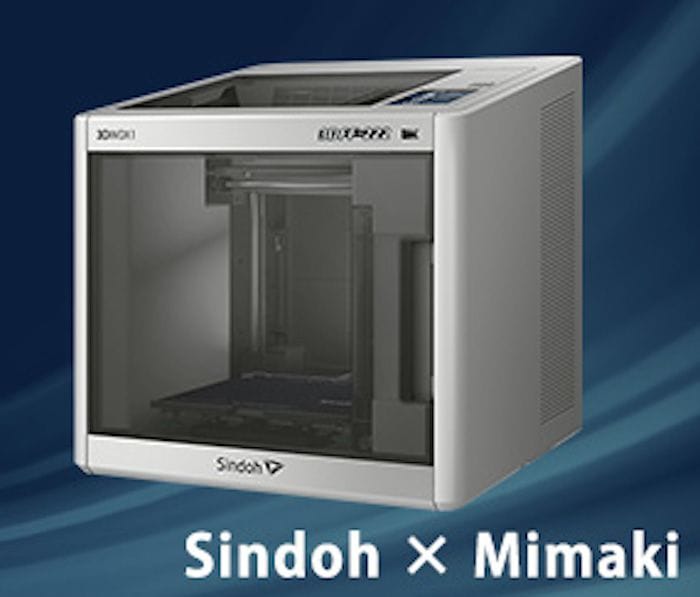![Mimaki’s new desktop 3D printer [Source: Mimaki]](https://fabbaloo.com/wp-content/uploads/2020/05/image-asset_img_5eb09a9d4972f.jpg)
In a bit of a surprise, Mimaki announced availability of a desktop 3D printer.
At first, this announcement seems to make no sense at all: Mimaki is a producer of large-format printers (mostly 2D, but also one full-color 3D printer). Their full-color 3D printer produces perhaps the best and most vibrant colors we’ve ever seen from a 3D printer.
However, it’s a rather large industrial device priced in the hundreds of thousands of US$. It’s definitely not the kind of machine a typical desktop 3D printer buyer would seek out.
When I saw the headline for this announcement, I got excited: could we be seeing a super-high-quality desktop full-color 3D printer?
No. That’s not what they announced at all.
In fact, the new Mimaki model 3DFF-222 is not a color 3D printer at all. It’s a filament extrusion machine, a process entirely unfamiliar to Mimaki’s existing product line.
What’s even more confusing is that the device is not a Mimaki device: it’s actually made by Sindoh. From what we can tell by examining the 3DFF-222’s specifications, it appears to be a re-branded Sindoh 3DWOX 1, one of the best desktop 3D printers one can buy.
But it began to make sense when I read more about how Mimaki is positioning the device. It’s not that they intend to sell the 3DFF-222 to consumers or hobbyists; no, they target their existing industrial clients.
The idea here is that a print shop (their typical buyer) could use the 3DFF-222 as an extra device to perform unusual feats not available on their other equipment, and also create things of great use to this particular audience.
Here are some of the uses they suggest:
-
In-house production of print jigs, used to assist in the production of print jobs, where something must be positioned precisely when mounting, for example.
-
Creation of 3D signs through direct print on formed objects, as Mimaki offers 2D color printers capable of printing textures on 3D objects. The idea here is to print a 3D shape and then color it with other equipment to produce, for example, 3D signage.
-
Manufacturing of molds for vacuum forming, through one of their other color 2D printers. The other device can print a color pattern on a flat sheet of thermoplastic, which is then vacuum formed around the 3D print to create a color 3D sign.
![Vacuum forming workflow for producing full color 3D signage [Source: Mimaki]](https://fabbaloo.com/wp-content/uploads/2020/05/image-asset_img_5eb09a9daf36b.jpg)
These are all interesting use cases that are highly specific to the 2D print industry in which Mimaki operates; they make little or no sense to anyone operating a typical desktop 3D printer.
Thus it does make great sense for this unusual Mimaki / Sindoh partnership: Mimaki provides additional useful functions for their buyers, and Sindoh gains another sales channel they would otherwise have never been able to access.
Via Mimaki











FELIXprinters has released a new bioprinter, the FELIX BIOprinter, which is quite a change for the long-time 3D printer manufacturer.